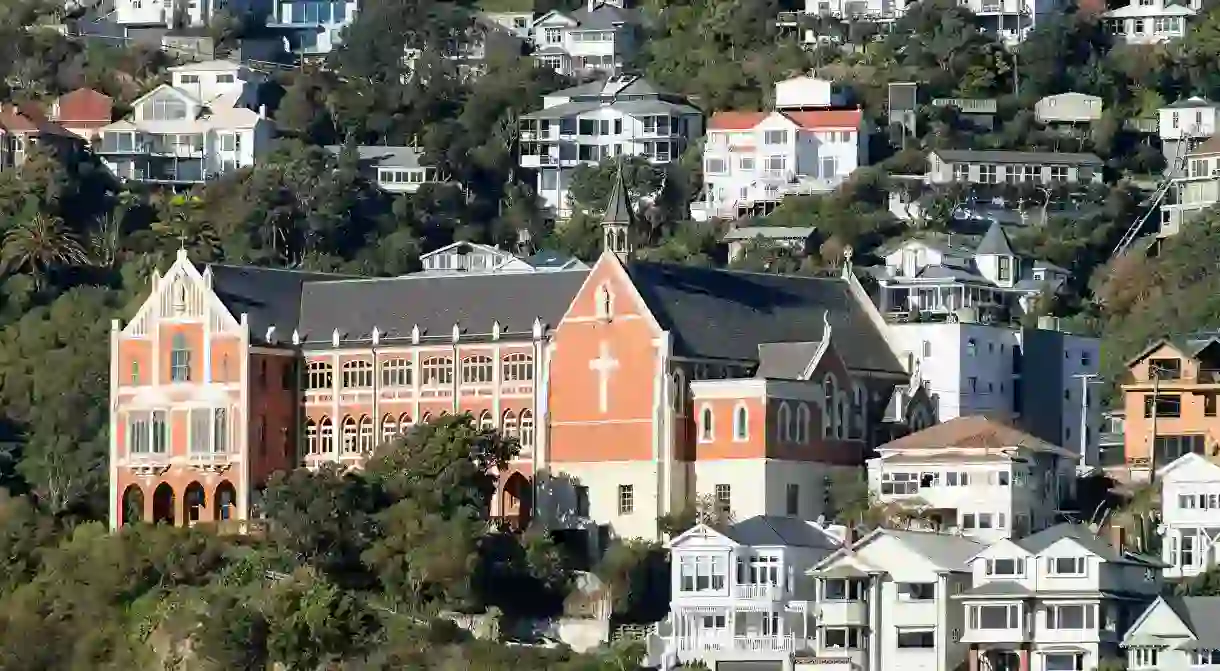The Most Beautiful Churches in Wellington, New Zealand

Beautiful churches are a prominent feature of Wellington’s architectural heritage. Whenever you’re exploring New Zealand’s capital city, make sure to keep an eye out for these 10 magnificent places of worship.
Did you know – Culture Trip now does bookable, small-group trips? Pick from authentic, immersive Epic Trips, compact and action-packed Mini Trips and sparkling, expansive Sailing Trips.
Old St Paul’s
Built by the Anglican Church between 1865 and 1866, Old St Paul’s is widely considered to be one of New Zealand’s greatest heritage places. Along with being one of the world’s finest examples of timber Gothic architecture, the central city church is also known for its interesting history; in fact, it survived demolition in the 1960s after a new St Paul’s was built just a block away. While Old St Paul’s is no longer a parish, it is still a popular place for weddings and funerals among other religious services.
St Barnabas
St Barnabas is an Anglican church in the suburb of Roseneath, just east of Oriental Bay. Originally part of St Mark’s parish, the church opened in 1899 and was designed in a simple neo-gothic style. Architect Joshua Charlesworth, who also conceptualised the Wellington Town Hall, was in charge of the church’s first iteration; after St Barnabas was extensively damaged by a fire in 1924, Frederick de Jersey Clere was tasked with its renovations. These days the church still has a plain Gothic aesthetic and also features a belfry tower and timber-panelled interior with exposed beams and sculptures.
Saint Gerard’s Catholic Church and Monastery
Perched on a hill that overlooks the Wellington Harbour, St Gerard’s is arguably one of the capital’s most prominent historic landmarks. The Catholic Church was erected in 1908 and was the first in the world to be dedicated to the Italian saint Gerard Majella. A monastery was later incorporated in 1932, despite initial resistance from the archbishop – while he could see the structure’s landmark potential, he was also concerned that it would overshadow the original place of worship.
St John’s Presbyterian Church
The present St John’s Church dates back to December 11 1885, and was constructed after its predecessor was destroyed by a fire in 1884. It was designed by renowned New Zealand architect Thomas Turnbull, who also conceived various other churches in the city. Some of St John’s most noteworthy architectural features include its Gothic design, a stately spire, plus a splendid interior composed of a large gallery with remarkable columns.
St Mary of the Angels
St Mary of the Angels was the third Catholic church to be built on its imposing Boulcott Street site. It has served local parishioners for nearly a century, despite having to temporarily close from 2013 until 2017 for some post-earthquake structural repairs. St Mary of the Angels is notable for its distinctive Gothic design, which was modelled after 13th century Cathedral of St Michael and St Gudula in Brussels, Belgium.
Wellington Cathedral of St Paul
The Wellington Cathedral of St Paul sits just across the road from the Parliament buildings. This is, in fact, the parish that took over from Old St Paul’s as the key place of worship for Wellington’s Anglican community. Along with being the mother church of the capital’s Anglican diocese, the Wellington Cathedral of St Paul is also notable for its strong royal connections. In 1954, the cathedral’s foundation stone was laid by Her Majesty Queen Elizabeth II; she later came back in 1995 to lay a commemorative stone to mark the cathedral’s completion.
Sacred Heart Cathedral
Also known as the Metropolitan Cathedral of the Sacred Heart, this Roman Catholic parish is again located in the Parliament precinct. The present brick and concrete structure stands on the same site as the former cathedral of St Mary which burned burnt down in 1898. Originally, Sacred Heart was conceived as a basilica – and its design strongly reflects that. Ionic columns made out of Oamaru Stone, bell towers culminated in domes and distinctively Roman aesthetics make Sacred Heart stand out from other local churches built in the late 19th-early 20th centuries.
Christ Church, Taitā
Christ Church in Taitā, Lower Hutt, is the oldest surviving church in the Wellington region, as well as being one of the oldest in its original condition in New Zealand. It originally opened in 1844; at the time Taitā only had 30 households and many of these pioneering residents are now buried in the churchyard. In the 1950s, controversy over a proposal to move the church influenced the establishment of the New Zealand Historic Places Trust. Parishioners won the battle to keep Christ Church in its original location; after suffering fire damage in the late 1980s the church was rebuilt and reopened in 1991.
Futuna Chapel
In 1958, the brothers of the Society of Mary (Marists) commissioned Hawke’s Bay architect John Scott to design a chapel for their spiritual retreat in Karori. The brothers themselves took charge for most of the construction and the Futuna Chapel made a strong architectural impression as soon as it was completed in 1961. With its culmination of a number of architectural traditions that included references to traditional indigenous Maori designs, the Futuna Chapel earned itself a New Zealand Institute of Architects’ gold medal in 1968 and was later named a place of historic significance by the Historic Places Trust.
St Joseph’s
St Joseph’s is a Catholic church in the suburb of Mount Victoria. Its parish was formally founded in 1913 in response to the burning down of the first local Catholic church in 1898; unfortunately a series of setbacks meant that the church itself wasn’t completed until 2004. The completion of the church is testament to local parishioners’ dedication to having a place of worship in Mount Victoria, despite the various land and transport regulations that were imposing barriers in St Joseph’s construction.













